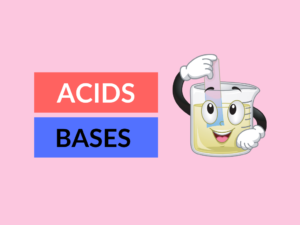Nucleotide and nucleosides play an important role in the foundation of nucleic acids. A long chain of nucleotides called polynucleotides forms DNA or RNA which differ in the sugar molecule present in it. Nucleosides form nucleotides by phosphorylation using the enzyme kinase. Nucleotides on hydrolysis form nucleosides.
What is A Nucleotide?
Nucleotides are building blocks of nucleic acids like DNA and RNA. These are the compounds consisting of a phosphate group, a nitrogenous base, and a pentose sugar molecule i.e., ribose or deoxyribose.
The bases are purine and pyrimidine groups. Guanine and adenine are purine bases and thymine, uracil and cytosine are pyrimidine bases.
Uses of Nucleotides
- Nucleotides are widely used as energy resources.
- Dideoxynucleotides are used for chain termination.
- Nucleotides are used to store and transfer information.
- Malfunctioning nucleotides are one of the major causes of all the cancers known.
What is A Nucleoside?
Nucleosides are structural subunits of nucleic acids like DNA and RNA. These are the compounds consisting of a nitrogenous base and a pentose sugar molecule that is ribose or deoxyribose. The bases are purine and pyrimidine.
Uses of nucleosides
- Nucleosides play an important role in intermediary metabolism.
- Nucleosides are used as anti-viral and anti-cancer agents.
- These are used in the biosynthesis of macromolecules.
- These are responsible for encoding, transmitting, and expressing genetic code in all living things.
- Nucleosides show high potency and selectivity against the herpes group of viruses.
- Nucleoside triphosphates (ATP, GTP, UTP) play important role in cell metabolism.
Difference Between Nucleotide and Nucleoside
| Nucleotide | Nucleoside |
|---|---|
| The compounds consisting of a phosphate group, nitrogenous base, and a pentose sugar molecule is called a nucleotide. | The compound consisting of a base and a pentose sugar molecule is called a nucleoside. |
| Some examples of nucleotides are deoxyguanosine 5’-triphosphate, Deoxyadenosine 5’-triphosphate, Deoxyuridine 5’-triphosphate. | Some examples of nucleosides are Inosine, guanosine, uridine, and adenosine. |
| Nucleotides are precursors of nucleic acids. | Nucleosides are precursors of nucleotides. |
| Nucleotides on hydrolysis produce nucleosides. | Nucleosides on phosphorylation in presence of enzyme kinase form nucleotides. |
| Malfunctioning nucleotides are the major reason for cancers. | Nucleosides can be used as an anti-cancer agent and also used against many viruses |
| Nucleotides = nucleosides + sugar base + phospate group | Nucleosides = sugar base + phospate group |
| Nucleotides are acidic in nature. | Nucleosides are slightly basic. |
| Nucleotides cannot be ingested directly. | Nucleosides can be directly supplied to the body by intake of food and by degradation of nucleic acids. |
| Degradation of nucleotides takes place inside the cell. | Degradation of nucleosides takes place in the lumen of the digestive system. |
| Nucleotides are used as energy resources, storage, and transfer of information. Dideoxynucleotide's used for chain termination. | Nucleosides are responsible for encoding, transmitting, and expressing genetic code. Triphosphates of nucleosides are used in cell metabolism. |
Conclusion
Both nucleosides and nucleotides differ in chemical composition by the presence or absence of a phosphate group. Nucleosides form nucleotides and nucleotides form nucleic acids like DNA and RNA. Malfunctioning nucleotides can cause cancer whereas the nucleosides can cure that cancer.



